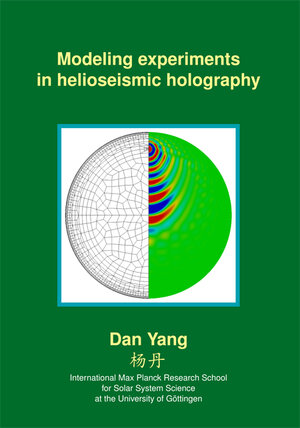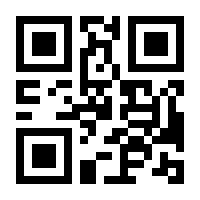
×
![Buchcover ISBN 9783944072678]()
Modeling experiments in helioseismic holography
von Dan YangHelioseismic holography is a powerful tool to probe the Sun’s interior in three dimensions by numerically focusing the acoustic waves observed on the Sun’s surface into any desired location. The current resolving power of helioseismic holography can potentially be improved by using the Porter-Bojarski (PB) integral, a method used in the field of acoustics to locate subsurface sources and scatterers. In this dissertation, we implement the PB integral for a realistic solar model, and develop a theoretical framework to investigate its signal and noise.
We use the first-order Born approximation to relate scatterers such as sound-speed heterogeneities, density, and flows to PB integrals, and assume the noise is due to the random nature of wave excitation. The example computations show that PB holographic measurements are diffraction limited. We also find large variations in both signal and noise at low frequencies due to contributions from individual long-lived modes of solar oscillations.
With the theoretical framework in hand, we then investigate the optimal flow-measuring strategy for helioseismic holography. Two different approaches are investigated and compared: the traditional method that measures directional phase shifts using pupils in a quadrant geometry (method #1) and a new method that correlates the estimated wave field at two nearby locations in the solar interior using all observed waves (method #2). We find that method #2 is consistently superior to the traditional method. Specifically, it reaches the diffraction limit of acoustic waves and has a much higher signal-to-noise ratio. This means method #2 will improve the imaging of solar subsurface flows, and should be used in future applications.
We use the first-order Born approximation to relate scatterers such as sound-speed heterogeneities, density, and flows to PB integrals, and assume the noise is due to the random nature of wave excitation. The example computations show that PB holographic measurements are diffraction limited. We also find large variations in both signal and noise at low frequencies due to contributions from individual long-lived modes of solar oscillations.
With the theoretical framework in hand, we then investigate the optimal flow-measuring strategy for helioseismic holography. Two different approaches are investigated and compared: the traditional method that measures directional phase shifts using pupils in a quadrant geometry (method #1) and a new method that correlates the estimated wave field at two nearby locations in the solar interior using all observed waves (method #2). We find that method #2 is consistently superior to the traditional method. Specifically, it reaches the diffraction limit of acoustic waves and has a much higher signal-to-noise ratio. This means method #2 will improve the imaging of solar subsurface flows, and should be used in future applications.


